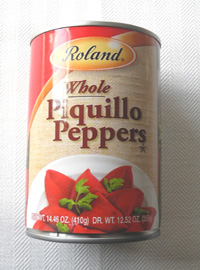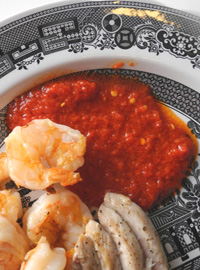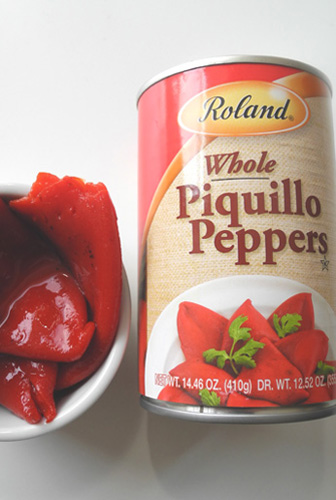What's Fabulous: Piquillo Peppers
Piquillo peppers are one of my pantry staples. Named for their cone-like shape (piquillo is Spanish for "little beak"), these small peppers, typically about 2 1/2-inches long, come mostly from Spain but you can also find ones from other Mediterranean and also South American countries. They are a frequent ingredient in cuisines from various regions of Spain.
Piquillo peppers are sold in cans, jars and vacuum packs, usually packed in water, although some are jarred in a tasteless oil like canola or sunflower oil. Once opened, any unused peppers should be kept refrigerated in some of their liquid. I try to buy the canned water-packed ones from Roland Foods, a company that works with food producers from around the world to bring high quality imports to our markets. I like items from Roland because the quality is reliably excellent and the cost is usually less -- sometimes significantly less -- than ones from other importers.
Shop around for price because piquillos -- ones that are identical in size, quality, and taste -- can range from less than $3.00 to more than $10.00 for the same size can or jar. The price will be no indicator of what you get as in my experience, every piquillo I've ever bought at every price point has tasted and appeared the same. The 14.46 oz. can of Roland water-packed whole piquillos (from Peru, not Spain) that I recently bought at Fairway cost $3.49.
With a deep red color and a mild, sweet, slightly tart taste, I think piquillos have more flavor than roasted red bell peppers. Plus their texture is more delicate due to having a thinner flesh than a bell pepper. Piquillos are roasted before being packed which means they are tender, can be eaten right out of the jar or can, and their surface usually has some appealing char residue. But unlike an ordinary roasted red pepper, little piquillos are usually sold whole, giving them even more versatility.
Besides having great flavor, their nutrition brings some bonuses. First, they are very low in calories (unless packed in oil which will add calories). And second, they are extremely high in vitamin C, comparable to that in citrus fruit.
Cooking With Piquillos
I like to keep these little peppers on hand for several reasons. First, in a tip I learned from a cookbook by Spanish chef José Andrés, a quick purée in a blender or food processor of three or four piquillos right out of the jar or can, plus a small drizzle of olive oil and a pinch of salt, makes a superb sauce for any kind of fish or shellfish. See our link to our adaptation of his recipe for Seared Tuna With Sesame Seeds and Piquillo Pepper which includes instructions for making the sauce.
Second, because they're sold whole, piquillos are like natural little packets that can easily become a tapas or hors d'oeuvre. When wanting to add a flavor accent to a plain piece of meat or fish without having to do lots of work, I will stuff piquillos with a tablespoon or so of goat cheese, making one or two per person. Add a trace drizzle of olive oil and bake for about 10 minutes in a 350 or 400 F oven until the cheese melts. The tang of the cheese partners so well with the sweet pepper flavor. Outstanding and so easy, plus it looks beautiful on a plate.
You can also stuff piquillos with tuna or crab salad as a side to a green salad to make a satisfying first course. Or stuff them with the salt cod purée known as brandade or shrimp salad to become an hors d'oeuvre (both Saveur -- see the link below -- and Martha Stewart have recipes), or add to an antipasto platter.
Third, you can use piquillos just as you would jarred roasted red peppers. Slice them to add to a grilled cheese sandwich, dip whole ones in bread crumbs or batter and deep fry, add whole to an antipasto platter along with cured meats and cheese -- perhaps Serrano ham and manchego, the Spanish sheep's milk cheese, to keep the Iberian flavors together.
Piquillos are a perfect example of how keeping a strategically stocked pantry can give you cooking versatility -- adding flavor and personality to your cooking, without adding lots of time or expense.


